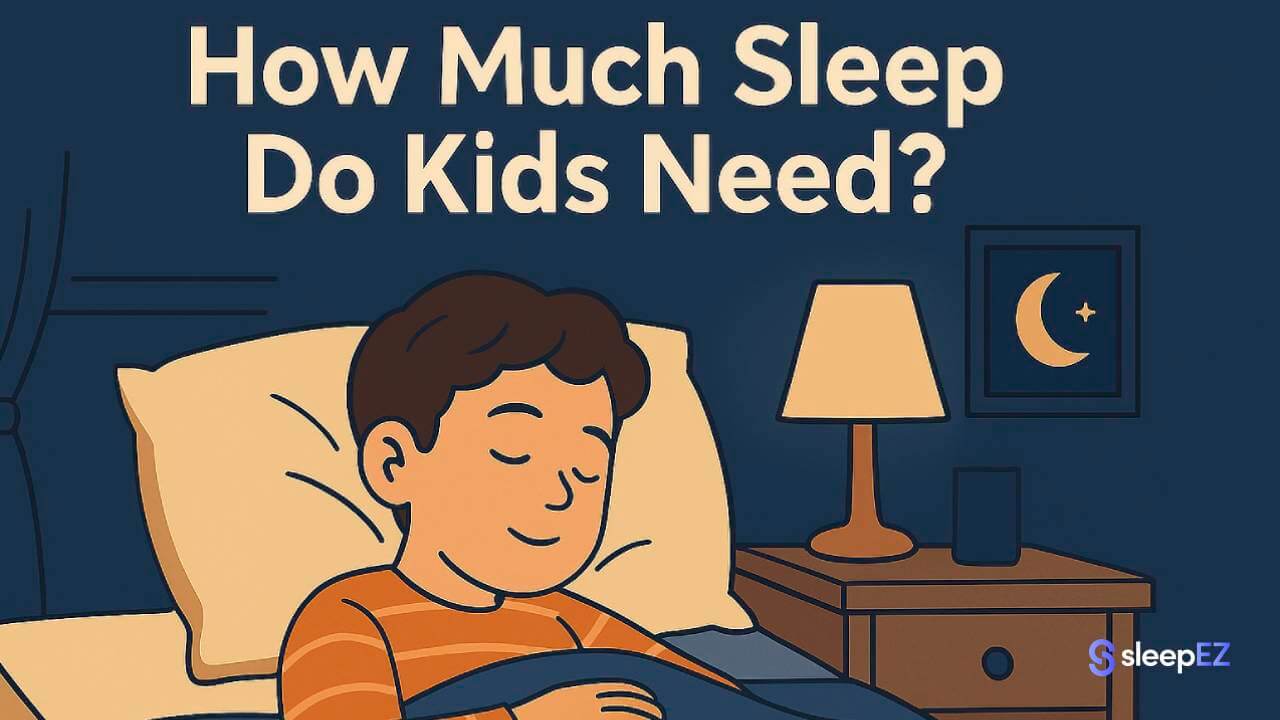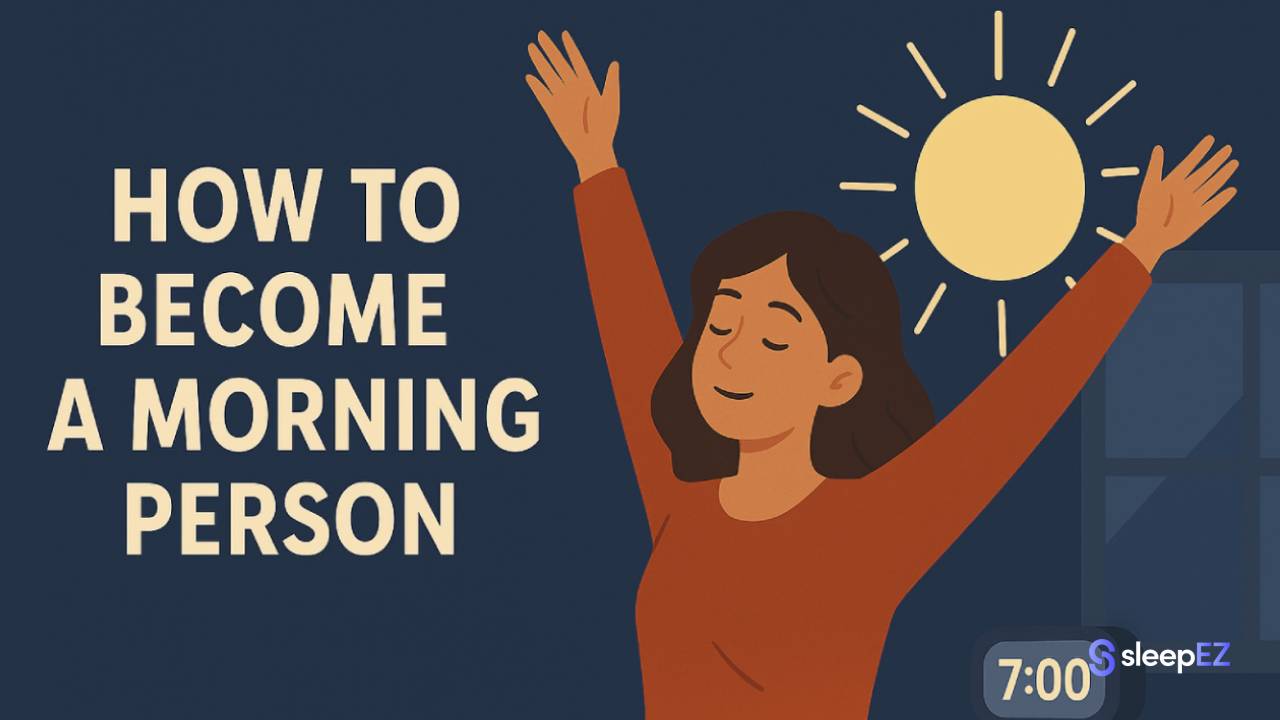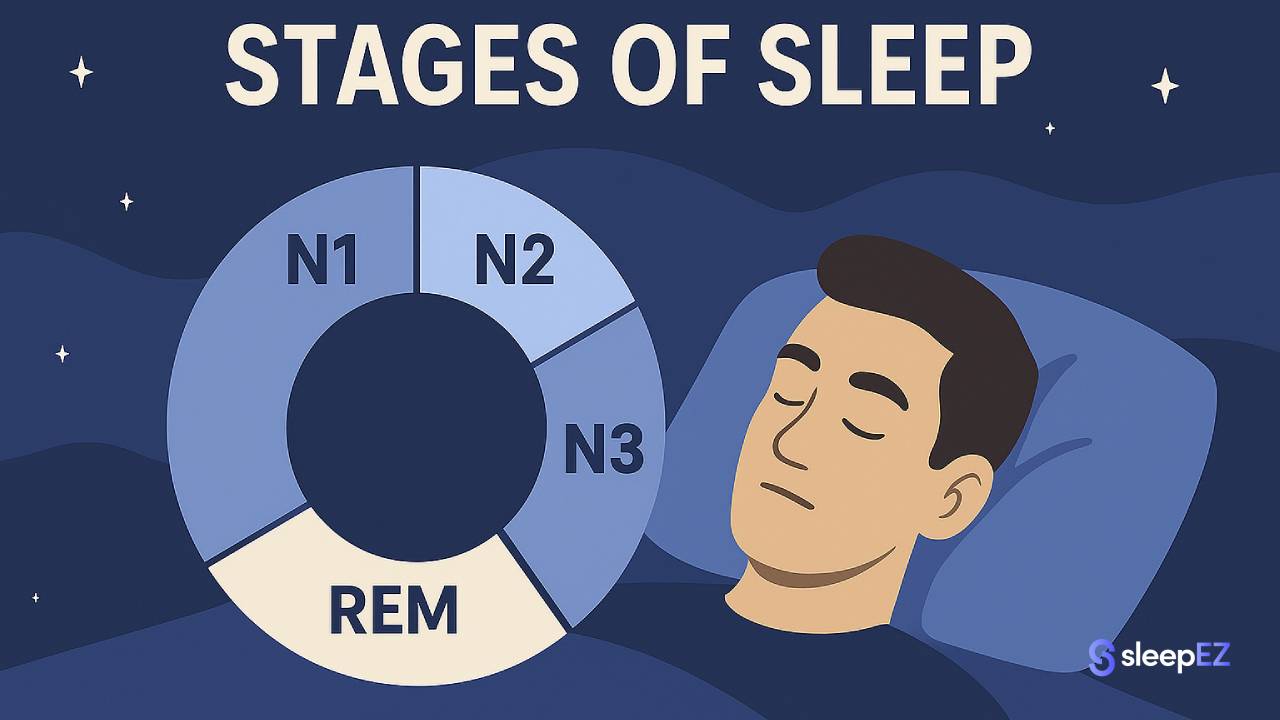Every parent worries about sleep. How much sleep do kids need? Is my child getting enough? Why won't they stay in bed? Will this affect their growth? These are the questions that can feel overwhelming.
Your child's sleep needs change dramatically as they grow. A newborn requires nearly twice as much sleep as a teenager. Understanding these changes helps you set realistic expectations and create better bedtime routines.
This guide gives you clear answers, a simple reference chart, and practical tips to help your child sleep well.
Children's Sleep Needs by Age Chart
| Age Group | Total Sleep per 24 Hours | Naps |
|---|---|---|
| Newborn (0-3 months) | 14-17 hours | Multiple short naps throughout the day |
| Infant (4-11 months) | 12-15 hours | 2-3 naps per day |
| Toddler (1-2 years) | 11-14 hours | 1-2 naps per day |
| Preschooler (3-5 years) | 10-13 hours | 1 nap or quiet time |
| School-Age (6-13 years) | 9-11 hours | None (occasional rest) |
| Teen (14-17 years) | 8-10 hours | None |
Why Is Sleep So Important for Kids?
Sleep does more than help your child feel rested. It's when their body and brain do essential work.
Physical Growth: Growth hormones are released primarily during deep sleep. This is when your child's body builds bone and muscle.
Brain Development: Sleep helps lock in what your child learned during the day. Their brain processes new information, forms memories, and strengthens problem-solving skills.
Emotional Regulation: Well-rested kids handle frustration better. They have fewer tantrums, better moods, and can focus more easily on tasks.
Immune System: Adequate sleep strengthens your child's ability to fight off colds, flu, and other illnesses.
How Can I Tell If My Child Is Sleep-Deprived?
It's not always obvious when a child is tired. Unlike adults who might just get quiet or yawn, sleep deprivation in children can sometimes look like hyperactivity or behavioral issues. Being mindful of the subtle clues is key.
Watch for these common warning signs that your child may not be getting the restorative sleep they need:
- Difficulty waking up in the morning
- Irritability, moodiness, or frequent tantrums (especially in younger children)
- Trouble concentrating at school or during tasks
- Hyperactivity or "wired" behavior in the evening
- Falling asleep during short car rides or at school
What Can I Do to Help My Child Sleep Better?
Once you know your child isn't sleeping enough, the question becomes: what can you actually do about it?
The good news is that most sleep problems can be fixed with a few simple changes to your routine and environment.
These strategies work for kids of all ages, though you'll need to adjust them based on your child's developmental stage.
Establish a Consistent Bedtime Routine
A predictable sequence of events tells your child's brain it's time to wind down. This might include a bath, putting on pajamas, brushing teeth, and reading a story together.
The key is consistency. Do the same things in the same order at roughly the same time each night. Your child's body will start preparing for sleep automatically.
Create a Soothing Sleep Environment
The ideal sleep environment is dark, quiet, and cool. These conditions promote your body's natural melatonin production.
Controlling light and sound is fundamental. A baby's sleep is fragile; a dog barking or a dish dropping can easily startle them awake.
This is where a sound machine becomes a parent's best friend. The Hush Light & Sound Machine creates a consistent, soothing audio environment—much like the womb—that masks these sudden noises.
Furthermore, its gentle, warm-hued night light provides just enough visibility for nighttime feedings without the sleep-disrupting blue light of a standard lamp
Read: White Noise Machine Baby
For older kids and teens, the battle isn't just noise—it's a busy mind and the temptation of their phone. A simple blackout mask can block light, but the Dreamy Sounds Sleep Mask does more. By integrating Bluetooth audio, it gives them a screen-free way to unwind.
They can listen to calming music, a podcast, or a meditation app, helping to quiet their thoughts and signal to their brain that it's time for rest, all while ensuring total darkness.
Manage Screen Time Before Bed
Blue light from phones, tablets, and TVs tells your child's brain it's daytime. This suppresses melatonin and makes falling asleep harder.
Set a "digital curfew" at least 60 minutes before bedtime. No screens during this window. Replace screen time with quiet activities like reading, drawing, or talking about the day.
Frequently Asked Questions
Do naps count toward total sleep?
Yes. The chart shows total sleep in a 24-hour period, including both nighttime sleep and naps. A toddler who sleeps 10 hours at night and naps for 2 hours is getting 12 hours total.
What should I do if my teen stays up late and sleeps in?
Teen brains naturally shift toward later sleep and wake times. Their circadian rhythm changes during puberty. However, they still need 8-10 hours of sleep. Help them maintain a consistent schedule even on weekends, and keep screens out of the bedroom.
Is it okay for my child to have a night light?
If your child needs a night light, choose one that's dim and warm in color (red or orange work best). Avoid bright white or blue lights, and don't let it shine directly in their eyes.
A Foundation for a Happy, Healthy Child
Good sleep habits start with understanding how much sleep your child needs at each age. Watch for signs they're not getting enough rest, and create a consistent, calming bedtime routine.
A dark, quiet room and limited screen time before bed make a real difference. Small changes add up.
Building healthy sleep habits is one of the best things you can do for your child. It affects their growth, learning, mood, and health. Start tonight.




Leave a comment
This site is protected by hCaptcha and the hCaptcha Privacy Policy and Terms of Service apply.